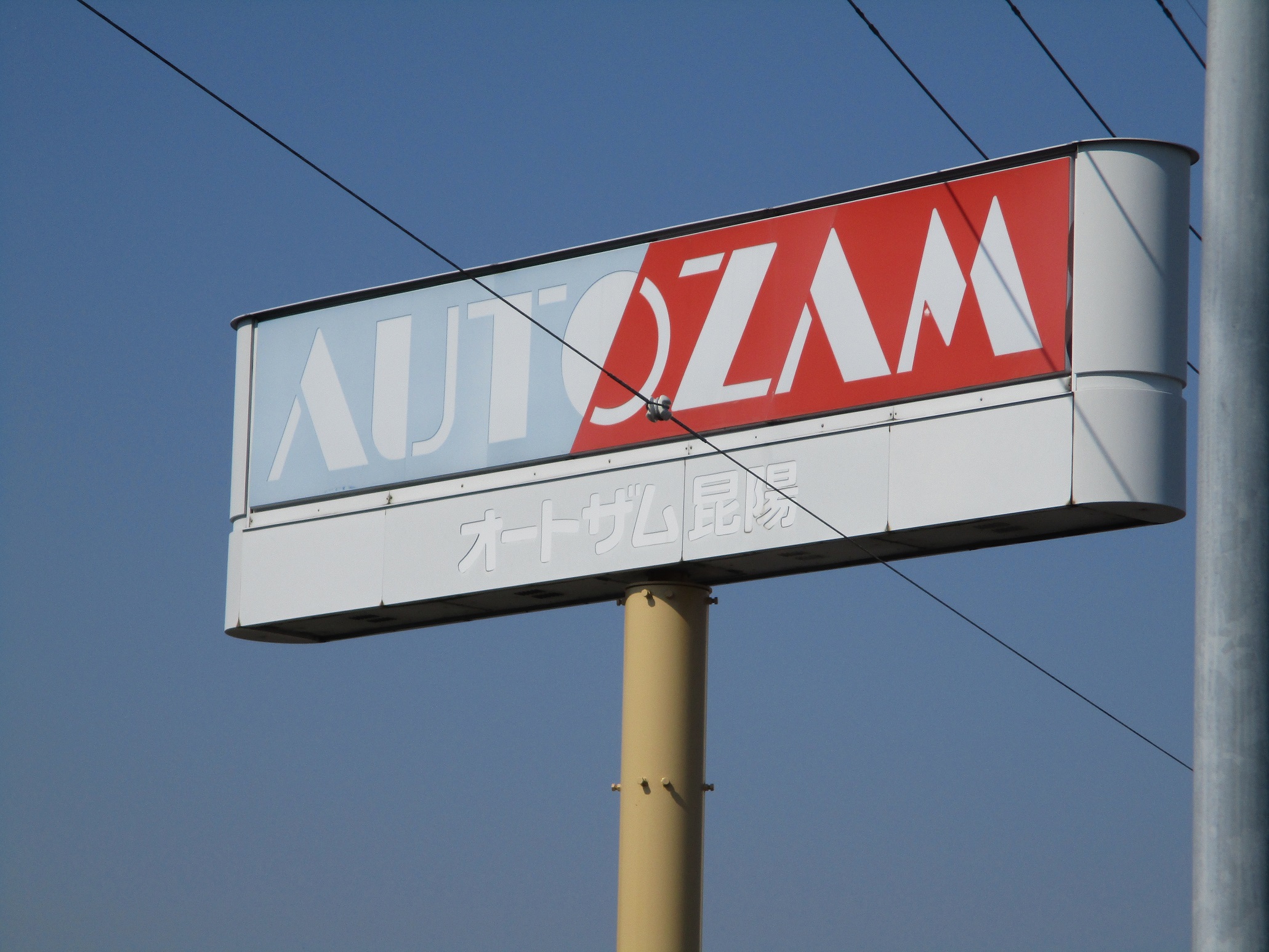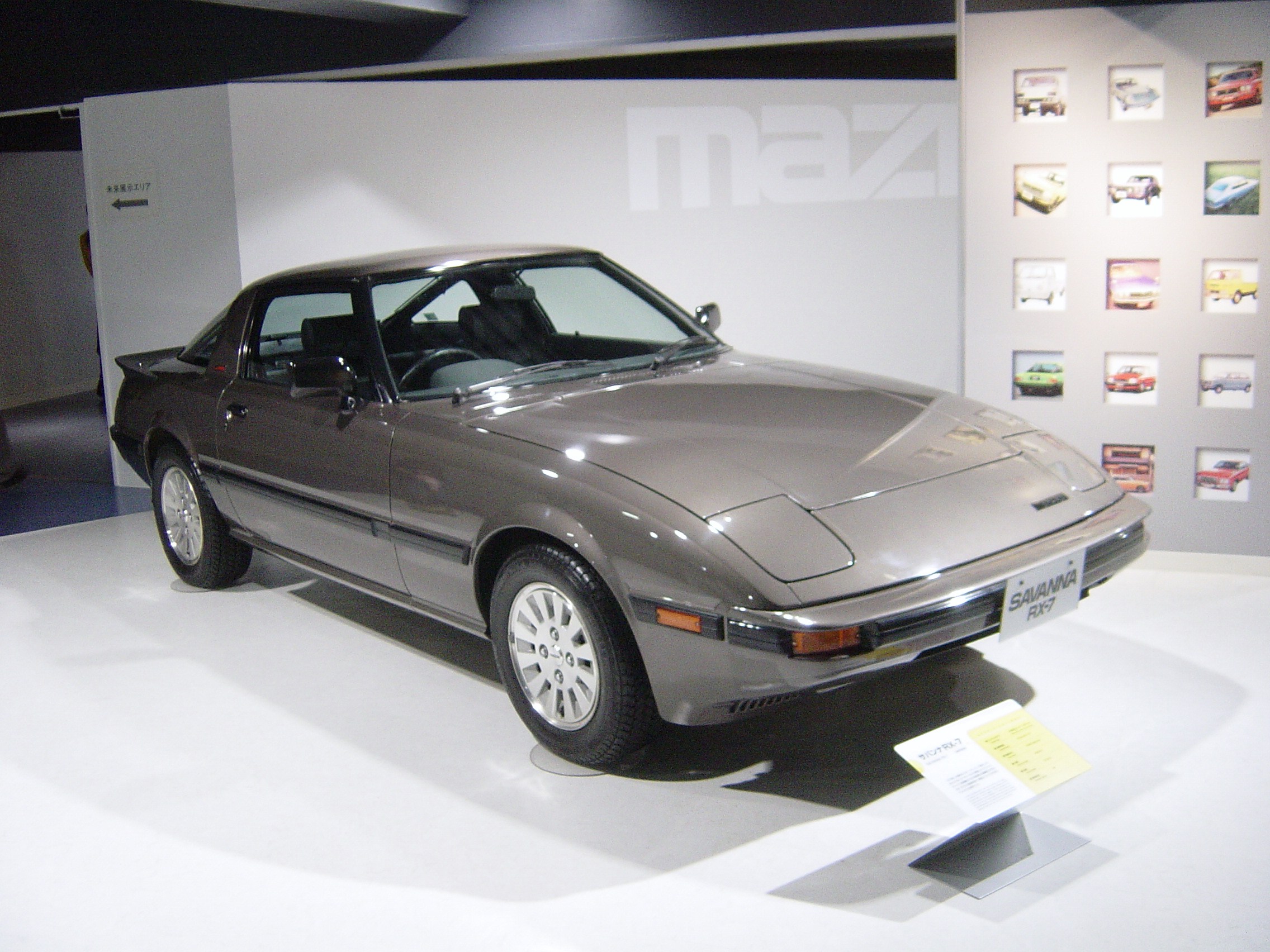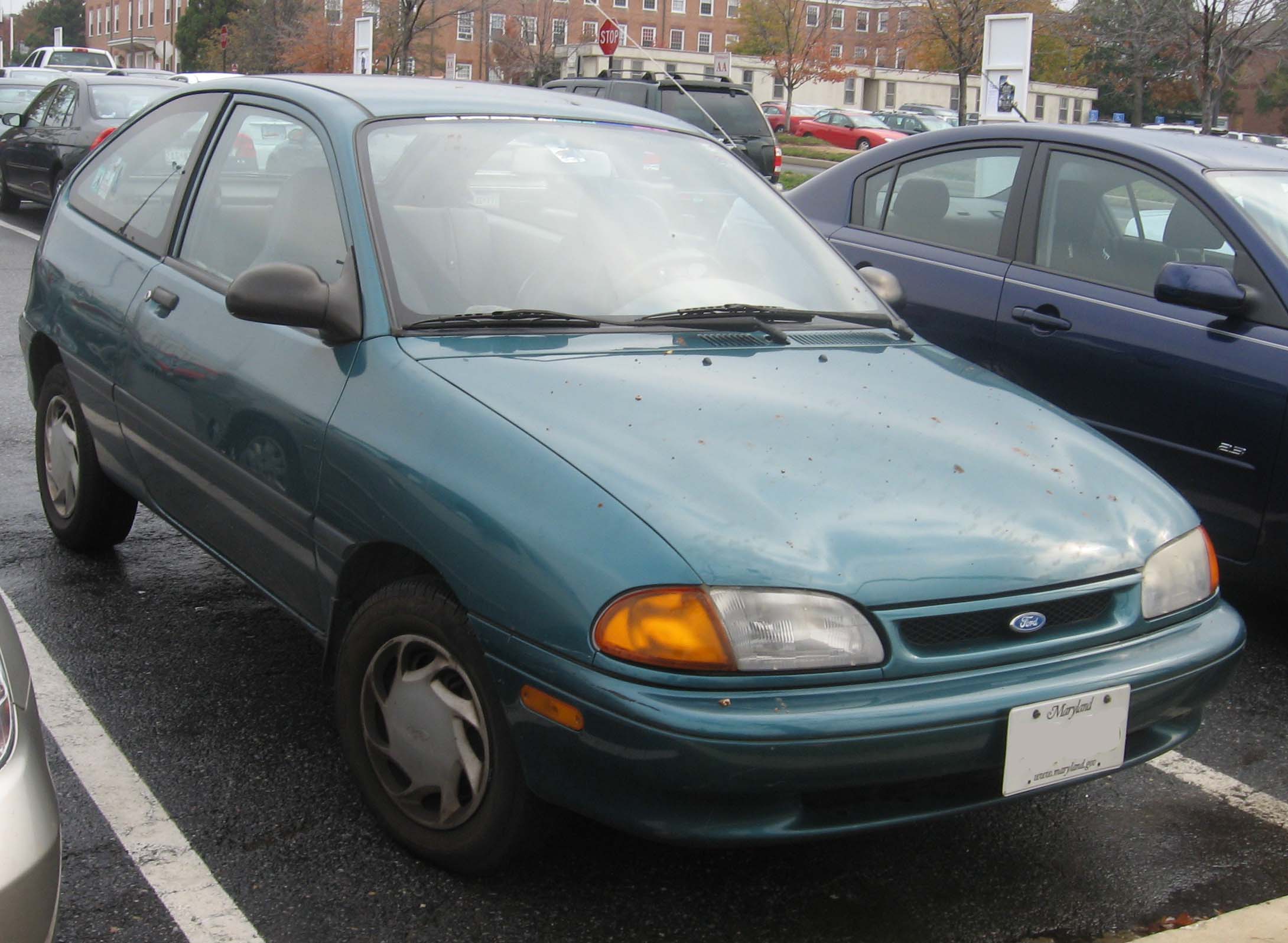|
Autozam
was a marque of Japanese automaker Mazda, specializing in small cars and Kei cars, many of which were Rebadging, rebadged Suzuki models. Autozam also briefly acted as importer of Lancia vehicles to Japan. The Autozam dealership channel is still in operation in some Japanese locations, but sell all current Mazda products. Overview In the late 1980s, Mazda began expansion of dealerships in Japan. The idea was to create "a familiar car shop in your city" (あなたの街の身近なカーショップ; ''Anata no machi no midjikana kāshoppu'') and network of dealerships, centred around small and medium-sized maintenance shops and used car dealers. In part of this brand strategy, Mazda launched of three new marques. The company created Autozam, Eunos (automobile), Eunos, and ɛ̃fini, in addition to the Mazda and Ford Motor Company, Ford brands already marketed there. Autozam's lineup - at the time of establishment - was centered on small cars (i.e Kei cars and Compact car, comp ... [...More Info...] [...Related Items...] OR: [Wikipedia] [Google] [Baidu] |
Autozam Clef
The Autozam Clef is a mid-size sedan that was sold by Autozam from 1992 until 1994. It shared Mazda's GE platform with cars like the ɛ̃fini MS-6 and Mazda MX-6 coupe. The word "clef" is a musical notation, and Mazda chose it to signify that the Clef was meant to serve as a reference point by which other Autozam products would become to be known or regarded as. The Clef was mechanically related to the Mazda Cronos, but featured different bodywork, and rear side window designs. The Clef had the same width dimensions as the Mazda Cronos which shared the 2.5 L V6 engine. The width, length, and engine displacement dimensions have particular significance in Japan, due to dimension regulations, where Japanese consumers pay an additional annual tax for larger vehicles, and also had implications as to how much the annual road tax obligation will be. As the Clef was the top level sedan at Autozam, which was introduced as a retailer of entry level products to Japanese consumers, the ... [...More Info...] [...Related Items...] OR: [Wikipedia] [Google] [Baidu] |
Mazda Carol
The Mazda Carol is a kei car manufactured by Mazda from 1962 until 1970. The Carol name was revived again with Mazda's 1989 re-entry into the kei car class with the Autozam brand. Since 1989, the Carol has been a rebadging, rebadged model manufactured by Suzuki for Mazda, based on the Japanese Suzuki Alto. The first two generations of the modern era Carols received unique bodywork, but since late 1998 the nameplate has been strictly a badging exercise. __TOC__ First generation (1962) The Mazda R360 was complemented by the more grown-up 2-door sedan Mazda P360 Carol in February 1962, the company's first 4-passenger car, and complemented the three-wheeled Mazda Mazdago. It was more substantial than the R360: although its total length of was the same, its wheelbase was considerably longer. The Carol weighed in at , versus for the diminutive R360. It used the Mazda OHV engine#DA, DA, a , rear-mounted water-cooled 358 cc straight-4, 4-cylinder OHV engine. This is one of th ... [...More Info...] [...Related Items...] OR: [Wikipedia] [Google] [Baidu] |
Autozam AZ-1
The Autozam AZ-1, known by the framecode PG6SA, is a mid-engined kei-class sports car, designed and manufactured by Mazda under its Autozam brand. Suzuki provided the engine as well as the inspiration for the design. Manufactured from October 1992 to October 1994, the AZ-1 was noted for its gullwing doors. Power came from the same Suzuki-sourced 657 cc turbocharged engine used by the Suzuki Alto that produced at 6,500 rpm and at 4,000 rpm. Suzuki later produced its own badge engineered version named the Suzuki Cara (PG6SS). History Pre-production Suzuki prototypes The proposal for the AZ-1 goes as far back as 1985 when Suzuki created the Suzuki RS/1 as a mid-engine sports car project for volume production. Suzuki's design for the Tokyo Motor Show was more than just a design exercise, they designed a fully functional car with a front/rear weight distribution of 45:55, powered by a modified 1.3-liter G13B engine borrowed from the Cultus GTi. This was follow ... [...More Info...] [...Related Items...] OR: [Wikipedia] [Google] [Baidu] |
Autozam Revue
The Autozam Revue is a subcompact car that was sold by Autozam, introduced in 1990. The demise of that marque led to the cars being renamed as the Mazda Revue in some markets. The car was also sold in many export markets as the Mazda 121, where it replaced the previous 121 that had been based on the first-generation Ford Festiva. The Revue was available in most markets as a small four-door saloon with an optional canvas sunroof added in February 1991. 1.1-, 1.3- and 1.5-litre engines were offered, with either five-speed manual or four-speed automatic transmission. In 1996, the 121 name was shifted to export versions of the Mazda Demio, a tall, five-door hatchback, which became exported as the Mazda2 in its second generation. A Ford Fiesta, assembled at Ford's Valencia plant barely modified, but rebadged as the Mazda 121, was also sold in some markets after 1996 (where the Demio was sold at the same time with its original name). Sales of the Revue ended in Japan in June 1998. ... [...More Info...] [...Related Items...] OR: [Wikipedia] [Google] [Baidu] |
Mazda Familia Bongo Premacy
, commonly referred to as simply Mazda, is a Japanese multinational automotive manufacturer headquartered in Fuchū, Hiroshima, Japan. In 2015, Mazda produced 1.5 million vehicles for global sales, the majority of which (nearly one million) were produced in the company's Japanese plants, with the remainder coming from a variety of other plants worldwide. During this time, Mazda was the 15th-largest automaker in terms of production globally. History Creation Mazda began as the Toyo Cork Kogyo Co., Ltd, as a cork-making factory founded in Hiroshima, Japan, 30 January 1920. Toyo Cork Kogyo renamed itself to Toyo Kogyo Co., Ltd. in 1927. In the late 1920s the company had to be saved from bankruptcy by Hiroshima Saving Bank and other business leaders in Hiroshima. In 1931, Toyo Kogyo moved from manufacturing machine tools to vehicles with the introduction of the Mazda-Go auto rickshaw. The name ''Mazda'' came into existence with the production of the company's firs ... [...More Info...] [...Related Items...] OR: [Wikipedia] [Google] [Baidu] |
Mazda
, commonly referred to as simply Mazda, is a Japanese multinational automotive manufacturer headquartered in Fuchū, Hiroshima, Japan. In 2015, Mazda produced 1.5 million vehicles for global sales, the majority of which (nearly one million) were produced in the company's Japanese plants, with the remainder coming from a variety of other plants worldwide. During this time, Mazda was the 15th-largest automaker in terms of production globally. History Creation Mazda began as the Toyo Cork Kogyo Co., Ltd, as a cork-making factory founded in Hiroshima, Japan, 30 January 1920. Toyo Cork Kogyo renamed itself to Toyo Kogyo Co., Ltd. in 1927. In the late 1920s the company had to be saved from bankruptcy by Hiroshima Saving Bank and other business leaders in Hiroshima. In 1931, Toyo Kogyo moved from manufacturing machine tools to vehicles with the introduction of the Mazda-Go auto rickshaw. The name ''Mazda'' came into existence with the production of the company's fi ... [...More Info...] [...Related Items...] OR: [Wikipedia] [Google] [Baidu] |
Ford Festiva
The Ford Festiva is a subcompact car that was designed and manufactured by Mazda for Ford between 1986 and 2002. Festiva was sold in Japan, the Americas, and Australia. The name "Festiva" is derived from the Spanish word for " festive". It was not related to the similarly sized and named Ford Fiesta, and was not replaced by the Ford Ka, which is smaller. Designed by Mazda using the DA platform and B series inline-four engines, the Festiva continued the trend of Fords built and designed by Mazda for the Asia-Pacific market such as the Laser and Telstar. South Korean first generation sales began in 1987 under the name Kia Pride, assembled by Kia under license. Australasia and Europe received the first version between 1987 and 1991 as the "Mazda 121". After 1991, Australasian sales occurred under the "Ford Festiva" name, while European sales continued under the name "Kia Pride". Kia ended production of the Pride in 2000. This ongoing production has been in parallel to the second ge ... [...More Info...] [...Related Items...] OR: [Wikipedia] [Google] [Baidu] |
Eunos (automobile)
was a marque of Japanese automaker Mazda, marketed as its upscale, fun to drive line in its home market. The brand existed from 1989 to 1996, when sales operations were integrated into ɛ̃fini. History In the late 1980s, Mazda diversified in the Japan market with the launch of three new marques. The company created Autozam, Eunos, and ɛ̃fini, in addition to the Mazda and Ford brands already marketed by it there. The Eunos marque, was marketed as a fun to drive, upscale brand compared to entry level Autozam, traditional Mazda products, and exclusive luxury brand ɛ̃fini. The name was derived for the ancient Greek "eu" meaning "good" and "nos", an abbreviation of "numbers" in English, meant to signify a number, or assortment, of good things. The Marque was launched in Japan with the Eunos 500 in January, 1992 and many of the vehicles created were exported to other markets. From 1991 until 1996, when the Eunos dealership was integrated into Mazda locations, Citroën product ... [...More Info...] [...Related Items...] OR: [Wikipedia] [Google] [Baidu] |
Mazda Cronos
The Mazda Capella, also known as the 626 in North America and Southeast Asia, is a mid-size car that was manufactured by Mazda from 1970 until 2002. Sold in the Japanese domestic market under the Capella name, the vehicle was also commonly known in other major markets as the Mazda 626. Ford, Mazda's partner at the time, also used the Capella platform to create the Ford Telstar and Ford Probe. 4,345,279 of the 626 and Telstar models were sold worldwide. Designed to compete against Japanese mid-size stalwarts such as the Honda Accord, Toyota Corona, and Nissan Bluebird, the Capella was succeeded by the Mazda6 (Atenza) in 2002. The car was named after Capella, the brightest star in the constellation Auriga, the sixth-brightest in the night sky and the third-brightest in the northern celestial hemisphere, after Arcturus and Vega. __TOC__ First generation (1970–1978) The first Capella was introduced in May 1970 and lasted until 1978, and was introduced as an intermediate alt ... [...More Info...] [...Related Items...] OR: [Wikipedia] [Google] [Baidu] |
ɛ̃fini
() was a luxury vehicle division of Japanese automaker Mazda that operated between 1991 and 1997 in Japan only. Its inception as a brand emerged in the late 1980s when Mazda diversified its sales channels in the Japanese market with the launch of three new marques. The company created Autozam, Eunos, and , in addition to the Mazda and Ford brands already marketed there. This selective marketing experiment ended in the mid-1990s due to economic conditions, largely attributed to the collapse of the Japanese asset price bubble in 1991. As a brand, encompassed most, if not all dealers formerly under the "Mazda Auto Store" dealership network established in 1959 when the Mazda R360 was introduced. Pronounced like the French word ''infini'', the name is written with a tilde over the lowercase Greek ''ε'' (as in ''ɛ̃''), and can therefore be assumed to be IPA, the pronunciation symbols taught in Japan, and sometimes used in product naming. The marque was a luxury-oriented brand ... [...More Info...] [...Related Items...] OR: [Wikipedia] [Google] [Baidu] |
Mazda 121
The Mazda 121 name has been used on a variety of Mazda automobiles for various export markets from 1975 until 2002: * 1975–1981 — Piston engined variants of the second generation Mazda Cosmo sports car * 1986–1991 — First generation Ford Festiva subcompact car * 1991–1998 — Autozam Revue subcompact four-door sedan * 1996–2002 — First generation Mazda Demio subcompact car (in countries where the Fiesta-based "121" was not sold) * 1996–2002 — Badge engineered version of the fourth-generation Ford Fiesta subcompact car Subcompact car is a North American classification for cars smaller than a compact car. It is broadly equivalent to the B-segment (Europe), supermini (Great Britain) or A0-class (China) classifications. According to the U.S. Environmental Prote ..., sold in some European markets File:1978 Mazda 121 pic1.JPG, Mazda 121 (1975–1981) File:1988 Mazda 121 (DA) Fun Top 3-door hatchback (2012-01-15).jpg, Maz ... [...More Info...] [...Related Items...] OR: [Wikipedia] [Google] [Baidu] |
Suzuki Alto
The is a kei car produced by Suzuki since 1979. The model, currently in its ninth generation, was first introduced in 1979 and has been built in many countries worldwide. The Alto originated as a commercial vehicle derivative of the Fronte, but over time the Alto nameplate gained in popularity and by 1988 it replaced the Fronte name completely. The Alto badge has often been used on different cars in Japan and in export markets, where it is considered a city car. Nameplate history In Japan, the Alto badge was originally meant to be for the commercial use version of the Fronte passenger car. The word "alto" is a musical term. When introduced, the Alto was only available as a three-door "light van" and with bare-bones equipment. However, Suzuki generally did not use the "Fronte" badge in export, usually calling all versions "Alto" abroad. Most early export Altos were thus technically speaking rebadged Suzuki Frontes. These were exported with changes such as enlarged engines, ... [...More Info...] [...Related Items...] OR: [Wikipedia] [Google] [Baidu] |





